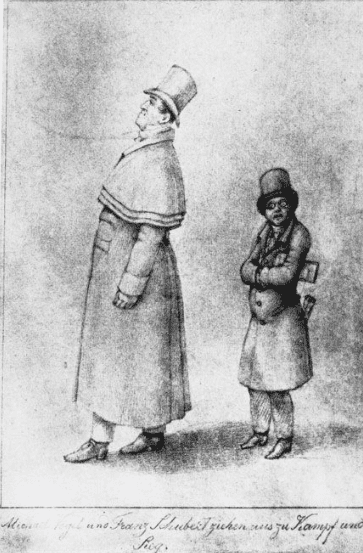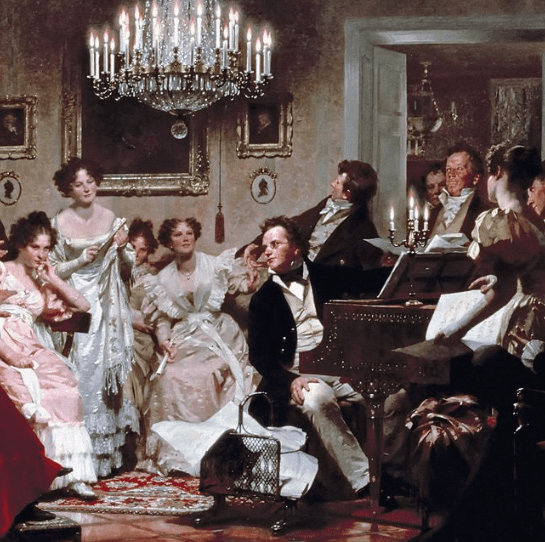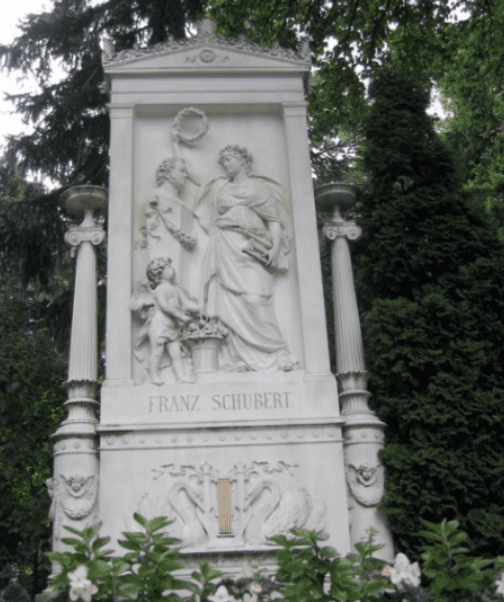Nicolas Robles
Badajoz, Spain

Born on 31 January 1797, Franz Peter Schubert was the twelfth of fourteen children, one of only five who survived infancy. His father was an enterprising schoolmaster and amateur cellist. Born in the Himmelpfortgrund suburb of Vienna, Schubert showed uncommon gifts for music from an early age. His father gave him his first violin lessons and his elder brother taught him piano, but Schubert soon exceeded their abilities. At age eight, he secured a soprano position in the choir of the Imperial and Royal Seminary (the sovereigns were emperors of Austria and kings of Hungary) where he was offered a free education. Displaying his instrumental and compositional skills, he impressed the Kapellmeister, Antonio Salieri, who accepted him as a private pupil. After Schubert’s voice changed in adolescence, he obtained a teaching position in his father’s school in 1814.
That year he met a young soprano named Therese Grob, daughter of a local silk manufacturer, and wrote several of his liturgical works for her. Schubert wanted to marry her but was hindered by the severe marriage consent law of 1815, which required an aspiring groom to prove that he had the means to support a family. In 1816 Franz von Schober, a student from a good family and with some financial means, invited Schubert to live with him in his mother’s house. The proposal was particularly timely, as Schubert had just applied unsuccessfully for the position of chapelmaster in Laibach and had also decided not to resume teaching duties at his father’s school. For a time he tried to augment his income by giving music lessons, but soon abandoned them and devoted himself to composition.
Schubert spent the summer of 1818 as a music teacher for the family of Count Johann Karl Esterházy at his palace in Zseliz (now Želiezovce, Slovakia). The pay was relatively good and his role of teaching piano and singing to the two daughters was relatively light, allowing him to compose happily. He might have written his Military March in D major (D. 733 no. 1) for Marie and Karoline, as well as other piano duets. On his return from Zseliz, he moved in with his friend Mayrhofer.
In the early 1820s, Schubert was part of a close-knit circle of artists and students who held social gatherings that became known as “schubertiades.” Many of these took place in Ignaz von Sonnleithner’s large apartment in Gundelhof (Brandstätte 5, Vienna). The friends received a severe blow in the early 1820s when Schubert and four others were arrested by the Austrian police, who were on guard against revolutionary activities and any suspicious gatherings of young people or students. One of his friends, Johann Senn, was tried, imprisoned for more than a year, and then permanently banned from entering Vienna. The other four, including the composer, were “severely reprimanded,” in part for “taunting [the officials] with offensive and dishonorable language.” Although Schubert never saw Senn again, he set some of his poems to music, Selige Welt (D. 743) and The Swan Song (D. 744).
Schubert was nicknamed “Schwammerl” (Mushroom) by his friends. Physically Schubert was unimpressive: stumpy with a rounded nose, an oval face, and a deep cleft in his chin. He was near-sighted and wore glasses. Although eager to play the piano at parties, he was quiet and uncommunicative. It was through the efforts of Anna Milder and Johann Vogl, popular singers of the era, that he became known to a small and select audience in Vienna, and the famous evenings known as Schubertiads were organized.

At the end of 1822, at the age of twenty-five, Schubert contracted syphilis, most likely through relations with Viennese prostitutes. His friend Franz von Schober, who probably helped to guide him down this path, later wrote: “Schubert became increasingly dissipated, visited seedy districts, hung out in bars, and also composed some in bars, and also composed some of his most beautiful songs in them, of course.” Some authors claim that Schubert contracted the disease from a maid while working for the Esterházy family during his stay in Zseliz in the Hungarian countryside, but the dates of his work there do not support that claim.
In 1822 Schubert met both Weber and Beethoven, but the encounters had little result. However, Beethoven is said to have recognized Schubert’s gift. On his deathbed, Beethoven apparently examined some of the young man’s works and exclaimed: “Truly, the spark of divine genius resides in this Schubert!” Beethoven also reportedly predicted that he would “make a great sensation in the world” and regretted not knowing more about him sooner. He wanted to see his operas and piano works, but his serious illness prevented him from doing so.
In a letter to a friend dated December 7, 1822, Schubert requested that future correspondence be sent to his father’s house. If this move was made because of syphilis, the infection would have occurred in early or mid-November. The chancre could have healed in early 1823 with the secondary eruption appearing six to eight weeks later. Either Schubert was too embarrassed to be seen in public with the recognizable venereal rash or he was confined to his home because of weakness. At the height of his illness, he fell into a deep depression with suicidal thoughts and a brief lack of interest in composing. Regardless, these symptoms improved during the spring but reappeared in July. He convalesced the following month but relapsed again in the autumn, which led to his admission to the Vienna General Hospital. In late 1823, Schubert’s condition improved significantly. In early 1824, he suffered another relapse manifested by a recurrent skin rash with associated mouth and throat lesions. For a brief period, he was unable to sing because of these syphilitic laryngeal sores, but there was no lasting vocal deterioration.
In 1825 he had a pleasant vacation in Upper Austria, where he produced the seven-song cycle Fräulein am See, based on Walter Scott’s “Lady of the Lake” and featuring Ellens Dritter Gesang (Ave Maria, D. 839). Schubert composed the texts of the songs in the German language.

Figure 3. Grave of Franz Schubert, Zentralfriedh of (Central Cemetery), Vienna, Austria. Photo by Loco Steve. Via Wikimedia. CC BY-SA 3.0
Ave Maria! Unbefleckt!
Wenn wir auf diesen Fels hinsinken
Zum Schlaf, und uns dein Schutz bedeckt,
Wird weich der harte Fels uns dünken.
Du lächelst, Rosendüfte wehen
In dieser dumpfen Felsenkluft
Ave Maria! undefiled!
The flinty couch we now must share
Shall seem with down of eider piled,
If thy protection hover there.
The murky cavern’s heavy air
Shall breathe of balm if thou hast smiled . . .
On March 26, 1828, the anniversary of Beethoven’s death, Schubert gave, for the only time in his career, a public concert of his own works. But in the late summer of 1828 he saw the physician Ernst Rinna, who confirmed his suspicion that he was hopelessly ill and would probably die soon. Some of his symptoms coincided with those of mercury poisoning, then used for treating syphilis. In early November he began suffering from headaches, fever, swollen joints, and vomiting. He was unable to keep solid food down and his health was deteriorating. Five days before his death his friend, the violinist Karl Holz, and his string quartet visited to play for him. The last musical work he wanted to hear was Beethoven’s String Quartet No. 14. Holz commented: “The King of Harmony has sent the King of Song a friendly invitation for the voyage.”
Franz Schubert died in Vienna at the age of thirty-one on November 19, 1828. The cause of death was officially diagnosed as typhoid fever, although other theories have been proposed, including the tertiary stage of syphilis. He was buried at his own request near Beethoven, whom he had admired all his life, in the cemetery of Währing (Vienna). Schubert had carried the torch at Beethoven’s funeral a year before his own death.
NICOLAS ROBERTO ROBLES is Professor of Nephrology at the University of Extremadura and a Member of the Academy of Medicine.

Leave a Reply